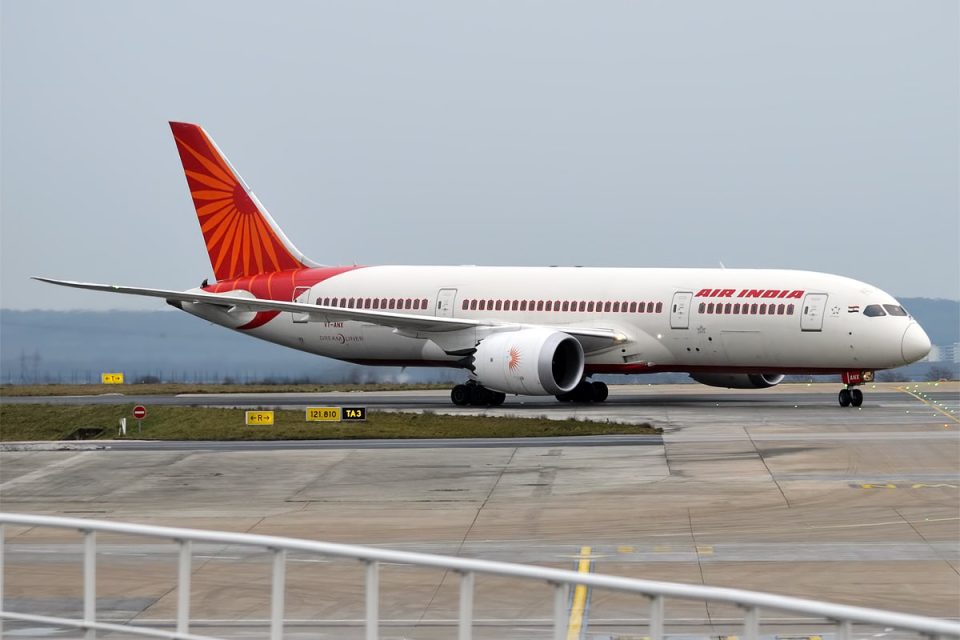Airlines
Why Air India offers staff a 2nd time voluntary retirement option

Why does Air India issue VRS to those over 40?
In an effort to cut costs and boost operational effectiveness, Air India has made voluntary retirement programs (VRS) available to its workers. By granting employees the option to retire voluntarily, Air India is enabling the airline to cut its personnel and associated costs without having to resort to layoffs or other more extreme measures.
The current offer, according to a notification, is only available to permanent general cadre officers who are 40 years of age or older and have at least five years of continuous service under their belts. Furthermore eligible are workers in the administrative and unskilled categories who have worked continuously for at least five years.
Employees who choose to retire early or voluntarily are frequently given financial incentives to do so through VRS schemes, which can include severance payments, expanded medical coverage, and pension plans. By providing these incentives, Air India can persuade workers to retire of their own will, lowering the company’s payroll costs and strengthening its financial position.
“If staff opt for voluntary retirement between March 17 and April 30, 2023, they will also be given an ex-gratia payment as a one-time bonus. According to the notification, eligible personnel who submit their applications by March 31, 2023, will receive an additional Rs 1 lakh on top of the ex-gratia payment.”
It’s worth noting that offering VRS is a common practice among many companies, especially those facing financial difficulties or restructuring efforts. It’s important to note that any VRS scheme must comply with labor laws and regulations, and affected employees should carefully evaluate the terms of the scheme before deciding to accept the offer.
Advancements in technology and training
Older workers might be paid more and receive better benefits than more recent hires, and they might also have different skill sets and working habits that are no longer in line with the demands of the business. In order to save payroll costs and create room for younger, more affordable personnel with more modernized skills and expertise, the corporation may opt to retire some of its older employees.
It’s crucial to remember that any decisions made regarding the retirement or termination of employees must adhere to labor rules and regulations, and those impacted may be entitled to severance payments or other benefits.

Airlines
An A320 plane flew for 28 minutes with both pilots asleep

In a startling incident, an Airbus A320 operated by an Indonesian airline, Batik Air, flew for a harrowing 28 minutes with both pilots asleep at the controls.
The alarming event unfolded on Batik Air Flight 6723, carrying 153 passengers, en route to Soekarno–Hatta International Airport in Jakarta. The saga began when the first officer allowed the captain to take a nap, only to fatigue himself, attributing his drowsiness to caring for his one-month-old twins. As the pilots dozed off, the aircraft veered off-course, prompting concerns from air traffic control (ATC) who lost contact with the flight 90 minutes into its journey.
Despite the pilots being unresponsive for nearly half an hour, ATC managed to track the aircraft using radar as it covered a staggering 210 nautical miles, equivalent to the distance between New York and Washington, D.C. The captain eventually woke up, realizing the perilous situation and rousing his co-pilot.
After correcting the flight path, the captain attributed the radio silence to a “communication problem,” and the plane eventually touched down safely in Jakarta. However, the incident sparked widespread concern and investigation by Indonesia’s transport ministry.
A preliminary report revealed that the second-in-command had not rested adequately before the flight, shedding light on the potential dangers of pilot fatigue. While the identities of the pilots remained undisclosed, the incident underscored the critical importance of ensuring crew members are well-rested and fit for duty.
Despite the gravity of the situation, the swift actions of the awakened captain averted disaster, emphasizing the necessity for robust safety protocols and measures within the aviation industry.
Airlines
Ex-Cathay Pacific A330-300 Destroyed by Fire during Long-Term Storage at Spain

In a dramatic turn of events, an ex-Cathay Pacific Airbus A330 met a fiery end at Ciudad Real Airport in Spain. The aircraft, with a distinguished service history spanning 28 years, was resting in long-term storage at the airport when disaster struck.
Reports emerged detailing the unfortunate incident, painting a picture of destruction and chaos. The once majestic A330, bearing the serial number MSN113, became engulfed in flames while undergoing dismantling procedures. What began as a routine process turned into a nightmare as a fire erupted in the aircraft’s tail section, quickly spreading to consume the entire fuselage.
Emergency responders, including the Civil Guard, medical teams, and law enforcement personnel, swiftly descended upon the scene to contain the inferno. Despite the intensity of the blaze, their coordinated efforts prevented any injuries among both the public and the brave individuals working to quell the flames.
By mid-afternoon, the Ciudad Real fire service declared victory over the fire, announcing its successful extinguishment. However, the aftermath left behind a trail of questions and concerns. Authorities launched an investigation into the cause of the blaze, with initial findings shrouded in mystery.
The head of the airport expressed astonishment at the unprecedented event, highlighting it as the first instance where airport infrastructure had to grapple with such a significant fire-related challenge. As the investigation unfolds, the aviation community awaits answers, hoping to shed light on the circumstances leading to the demise of the retired Airbus A330.
Airlines
Air India’s last VVIP Boeing 747 now found a new home in USA

In a symbolic transition marking the end of a storied chapter in aviation history, Air India bid farewell to its last remaining Boeing 747-400 jumbo jetliners, once revered for ferrying dignitaries including prime ministers, presidents, and vice presidents.
The sale of these iconic aircraft to AerSale, a company based in the United States, signals the closure of a remarkable era for the airline.
The decision to part ways with the Boeing 747s was driven by practical considerations. Tata Group, the new custodian of airindia flights, deemed these majestic planes uneconomical to operate in today’s aviation landscape. As such, out of the four sold, two will be repurposed into freighters, while the remaining pair will be meticulously disassembled to harness their valuable parts.
The transaction, orchestrated by Mumbai-based Vman Aviation Services, underscores the strategic shift in Air India’s fleet management strategy under its new ownership. Tata Group’s decision to divest from the 747s reflects a commitment to optimizing operational efficiency and aligning with contemporary industry standards.
Skytech-AIC, a UK-based remarketing firm engaged by Tata Group, facilitated the sale of these iconic aircraft, marking the conclusion of their illustrious service with Air India. The airline’s last flight featuring the Boeing 747 took to the skies between Delhi and Mumbai in March 2021, encapsulating decades of distinguished service and indelible memories.
The allure of used aircraft parts continues to resonate across the aviation sector, offering operators a cost-effective alternative without compromising on quality or performance. The transfer of these aircraft to AerSale not only ensures their continued utility but also underscores the enduring legacy of Air India’s fleet.



























